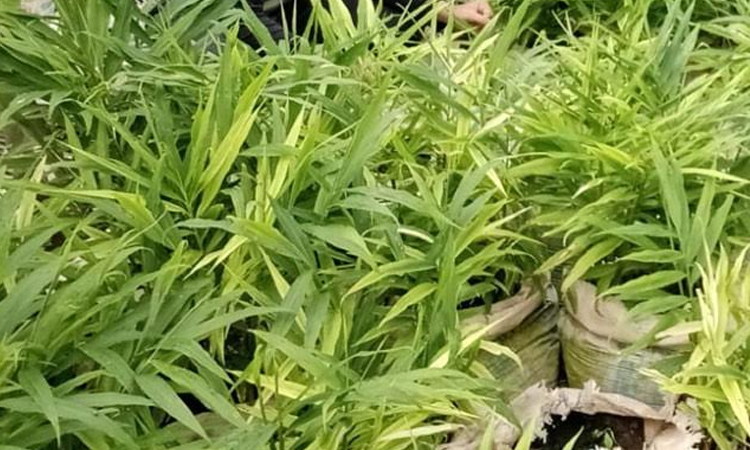News Flash

By Md Aynal Haque
RAJSHAHI, July 28, 2025 (BSS) - Ginger cultivation using the bag method, also known as sack or geo bag farming, is gaining traction in Rajshahi due to its low cost, high returns, and effective use of fallow land, especially in shaded mango orchards.
This technique involves planting ginger rhizomes in sacks filled with soil and organic manure, such as dung or mustard oil cake. The sacks are placed in shaded or unused spaces under trees, in orchards, or around homesteads, minimizing land waste and exposure to natural disasters like floods and disease outbreaks.
Ziaul Haque, 45, of Hujripara village in Paba Upazila, has emerged as a pioneer in this method. This year, he planted ginger in 20,000 sacks across unused orchard and homestead lands.
"Growing conditions have been excellent with no disease infestation," he told BSS recently.
Haque expects a harvest of 18,000 kg of ginger and profits of Tk 20 to 25 lakh, citing low production costs and high market prices.
The method not only boosts income but also simplifies cultivation. It requires less labor, minimizes waterlogging risks, and enables use of otherwise unproductive shaded land.
Haque's success has inspired many unemployed youths to adopt this farming method.
Monzurul Huda, former Director of the Department of Agricultural Extension (DAE), said sack farming allows farmers to diversify crops, maximize land use, and generate high returns sustainably. He emphasized that with rising ginger prices, the method is becoming more appealing.
Farmers Ashiq Uzzaman (45) and Mejbaul Hasan (48) from Biraldah in Puthia Upazila started small-scale sack cultivation three years ago. This year, they planted ginger in 3,000 sacks on 1.5 bighas of abandoned orchard land at a cost of Tk 80,000, expecting a return of Tk 5 lakh.
They said garden owners are now coming to them for advice.
Ashiq explained the process: sacks are filled with soil and organic manure, ginger rhizomes are planted in Chaitra and Baishakh (mid-March to mid-May), and the crop is ready in about six months.
Umme Salma, Deputy Director of DAE, said ginger has been cultivated in 400,750 sacks this year across shaded and unused lands in Rajshahi. She believes this practice will significantly contribute to meeting national ginger demand.
Nazrul Islam and Tariqul Islam, orchard owners, said that ploughing mango orchards is difficult, leading to uncultivated land. But sack farming offers a cost-effective, no-till solution that utilizes abandoned land and capitalizes on ginger's high market demand.
Atanu Sarker, Sub-Assistant Agriculture Officer in Godagari Upazila, noted that the region has around 900 hectares of mango orchards, most on elevated land that avoids waterlogging -- ideal conditions for sack-based ginger farming.
He said, "This offers orchard owners an additional income stream without compromising their main crop."